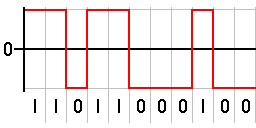Digital electronics facts for kids

Digital electronics is a special part of electronics. It uses "boolean logic" and "discrete signal electronics" to make devices work. Think of it as the language that digital gadgets speak!
Many everyday things use digital electronics. These include computers, digital cameras, digital televisions, and mobile phones. Even flash memory sticks and hard disks inside computers rely on it. Digital electronics helps these devices process information. It takes real-world signals, like sounds or pictures, and turns them into digital information. This process is called Digital signal processing.
How Digital Circuits Work
Digital electronics is all about digital circuits. These circuits use a special kind of math called Boolean logic. This logic helps them make decisions. In digital circuits, information is shown using only two values: "true" or "false."
These "true" and "false" values are represented by different electrical voltages. For example, "true" might be 0 volts, and "false" might be 5 volts. These circuits are built using tiny parts called "logic gates."
Digital circuits are very strong against "noise." Noise is like unwanted interference that can mess up signals. However, digital circuits can use a lot of energy. Digital circuits were invented in the 1900s. They are the main building blocks for all modern digital communication and computers.
Images for kids
-
A binary clock, built by hand on a breadboard. It shows time using binary numbers.
-
An Intel 80486DX2 microprocessor. This is like the brain of an old computer.
See also
 In Spanish: Electrónica digital para niños
In Spanish: Electrónica digital para niños





